Sometimes, unexpected plans can turn out to be pleasant surprises. After our much-anticipated Halong Bay cruise was canceled and trying to get over the disappointment, we scrambled for alternative tours. Luckily, we walked into a travel agency in Hanoi that gave us options. One of their top recommendations was Mai Chau, an area we hadn’t heard of before. Come see what we discovered in this beautiful area of Northwest Vietnam.
The Mai Chau valley is located about three hours from Hanoi in the Hoa Binh province. The residents’ simple lives and landscape almost made it seem like another world. Located between towering cliffs, the valley was filled with verdant rice fields and charming villages. It was such a contrast to Hanoi’s bustling streets.
There are over 50 ethnic minorities in Vietnam. The Mai Chau district has about seven of these ethnic minorities. The Tai Dam (White Thai) and Tai Kao (Black Thai) make up the majority in the area. Their ancestors are originally from Thailand but many have preserved or integrated their culture. The white and black designations were due to the color of their clothes/sashes.
The drive to the valley was very picturesque as we passed through many agricultural and rural areas and limestone rock formations. The Thung Ke Pass was a popular rest stop. The area is usually covered in fog so always worth a stop for safety and for its views.
The roads were a bit windy and narrow here but the panoramic views were spectacular. Many locals have food shacks here. We found plenty of soups, corn, fruits and even snails. Nope, we didn’t try them despite some coaxing from our tour guide.
This was our first glimpse of the area. Here are some things to do in the Mai Chau Valley with kids or without too.
Discover the Villages
The Mai Chau village is where the main road passed through. We walked around here and found some stores, hospital, schools and the market. It was a bit more developed compared to the other villages.
Many locals in the outdoor market sold vegetables and fruits and even some chickens. It was rural charm at its finest as several friendly locals greeted us. If you’re here during the weekend, don’t miss the Sunday market. Various ethnic groups from nearby areas come here to sell their produce, animals and handmade textiles.
We also walked around the villages which were just behind the main village with our tour guide. It gave us an opportunity to see the locals’ living quarters up close. We saw many farm animals along the way. It was interesting to see the residents living a simple life, off the grid and almost self-sustaining.
We spotted many water buffalos along the highway heading to Mai Chau. But, we got to see them up close as we explored the villages. Watch where you step, though. They just let things drop.
Water buffalos are extensively used with agricultural tasks like plowing fields, carrying and moving heavy objects and even transportation. We enjoyed watching the local kids riding them along farm roads.
I knew them as “carabaos” growing up in the Philippines and Guam. Seeing so many of them here brought back some wonderful childhood memories. My kids enjoyed seeing so many of them, including their babies since they’ve only ever seen one and even rode it during their first visit to Guam several years ago.
We also came across the Thai ethnic Museum and cultural house. Unfortunately, they were closed and would have been interesting to visit and know more about the ethnic tribes here.
Ride Bikes
Despite the summer heat and humidity, we decided on doing a bike ride around the rice fields. Our hotel had several free bikes to borrow. Many of the lodges and homestays in the area also provided bikes for their guests.
Other than the scooters and mopeds (which we weren’t comfortable riding), biking was the best alternative to see the villages. It was a wonderful way to observe local life. Most of the paths that connected the villages and rice paddies were paved and well maintained. It was relatively flat and easy to get around.
While we’ve biked along beaches, the streets of Paris and Versailles and even among tulip fields in Amsterdam, it was also an unforgettable experience to bike through this rural area and along the rice paddies. The dog is the photo followed us around during our ride and even followed us back to our lodge.
We enjoyed watching the locals traipse through the paddies and tend to their crops. Depending on when you visit, the rice fields may look a little different. Our summer visit only had hints of rice as it was just the beginning of the planting season.
Spring is supposed to have a lot of green. Our guide told us the best time to see the fields is during harvest season in autumn when the rice paddies turn a golden color.
Stay or Visit Houses on Stilts
The raised wooden houses on stilts is one of the unique characteristics of the Mai Chau area. The Thais built these houses on stilts to keep animals from entering their homes and against rising water. It also provided better ventilation. Most were about four to five feet off the ground.
We learned that many visitors go to Mai Chau and do homestays in two of the biggest villages: Poom Cong and Lac. This includes eating and staying in traditional houses and hosted by a local family. It looked like a wonderful opportunity to immerse in the culture and get to know the locals.
Homestays can accommodate and adjust guest preferences. Most of these homestays come with western style toilets and satellite TVs. There is no nightlife here and it was really quiet after the sunset. Some hosts offer home-brewed rice wine or cultural performances to enhance the local experience.
While we ended up staying at a nature lodge instead, we had an opportunity to see one of these stilt houses during our lunch stop. It was one big room that probably fit 8-10 people on mattresses spread out on bamboo slat floors. There was a western style modern bathroom attached. We were told many also come with mosquito nets.
Our lodge set up a cultural performance show after dinner. Some of the people performing were employees. They entertained us with various interesting dances related to the seasons, harvesting and their culture. I loved their costumes and they encouraged audience participation in the end including sampling some rice wine which my husband thought was really strong.
Watch Weavers and Buy Souvenirs
I always enjoy going to less mainstream places for their unique handmade textiles and souvenirs. The Mai Chau area and its local minority ethnic tribes are known for their handicrafts especially scarves, clothes, shawls and wall hangings.
We found many local homes with weaving looms underneath their homes. The Thais specialized in weaving colorful and traditional brocades. Some villagers sold these underneath their houses but there were also several shops scattered around the villages.
The scarves were so beautiful and prices were reasonable. Many scarves were between $5 – $10. We found this sweet woman underneath her house weaving the beginning stages of a scarf. It was so fascinating to watch her weave several yarn pieces into various patterns.
Eat like a local
One of our favorite memories about visiting Vietnam and the Mai Chau Valley was the food. We arrived at the area around lunchtime so our first stop was eating at a traditional Thai house on stilts.
The dining area was set up underneath the house. Our lunch consisted of some traditional dishes and was quite a feast. Look at this beautiful presentation too.
My husband really liked the smoked fish that was cooked inside the bamboo. He said it was unique and delicious. The steamed rice was a bit more sticky than we’re used to but those potato chips and meatballs were actually very good.
We ate at our lodge for dinner where we were served with more local dishes. The food was included with our tour package and the travel agency chose a variety of local dishes. There was so much food!
There were not many restaurants in the villages since most homestays and lodges offer a variety of home cooked meals which were hard to beat.
Go Trekking
Trekking or walking treks/hikes is also a popular activity around here. Many tour companies offer multi-day treks to explore several villages and the chance to stay overnight in local homestays in each village. Guided tours are highly recommended since it is walking through off the beaten path rural trails and rice paddies and even to some remote villages.
Itineraries vary from 3 to even 7 days. Late September to early May are recommended for the best times to trek. It was too hot during our visit for us to do any trekking. But, also look into trekking to the Pu Loung Nature Reserve or Pu Hu Nature Reserve.
Explore Caves
The limetone caves in the area were a popular stop for visitors and a welcome respite from the heat. The two main ones were Mo Luong Cave and Chieu also known as 1,000 Steps. One of them was once used as a military base. Unfortunately, it rained heavily a day or two before our arrival so the caves were flooded and were closed to visitors.
Tips for Visiting Mai Chau Valley
- Be prepared for the weather. The area has dry cool winters around January and February. Summers, between June to September, are hot and humid. We were told the best times to visit are during Fall and Spring time.
- Pack right. Dress accordingly for the weather including layering during winter. Bring waterproof items and sunscreen during the summer.
We were caught in a torrential downpour that lasted about 20 minutes and then was sunny again. Rice paddies surround the areas so pack insect repellant.
- Book with a reputable travel agency. We found trip is best done and planned with a local travel agent. There are buses from Hanoi for those who want a DIY itinerary. The travel agents took care of our accommodations, food, air-conditioned transportation in a large van and provided a tour guide.
We got lucky that the couple who was supposed to join us cancelled so we essentially had a private tour. Our tour agency was Tony’s Tours and they were located by the water puppet theater in Hanoi.
- Bring enough cash for to buy souvenirs and to tip your driver and tour guide. Drinks were also not included with lunches and dinner. We only found one ATM at the main village.
- Where to Stay: if you don’t want to do a homestay, there are a few alternatives. Mai Chau Lodge was highly rated but was a bit expensive. We stayed at the Mai Chau Sunrise Village. We had a large, air-conditioned room with an outdoor shower on the second story of a separate building. It was located facing the rice paddies with beautiful views.
[stextbox id=”black” bgcolor=”b0c4de”] If you liked this post, please get the latest posts and updates free. Follow me on Twitter, Instagram, or Facebook. Thanks! [/stextbox]
*Have you heard of Mai Chau? Would you do a homestay?
Pin it for later!
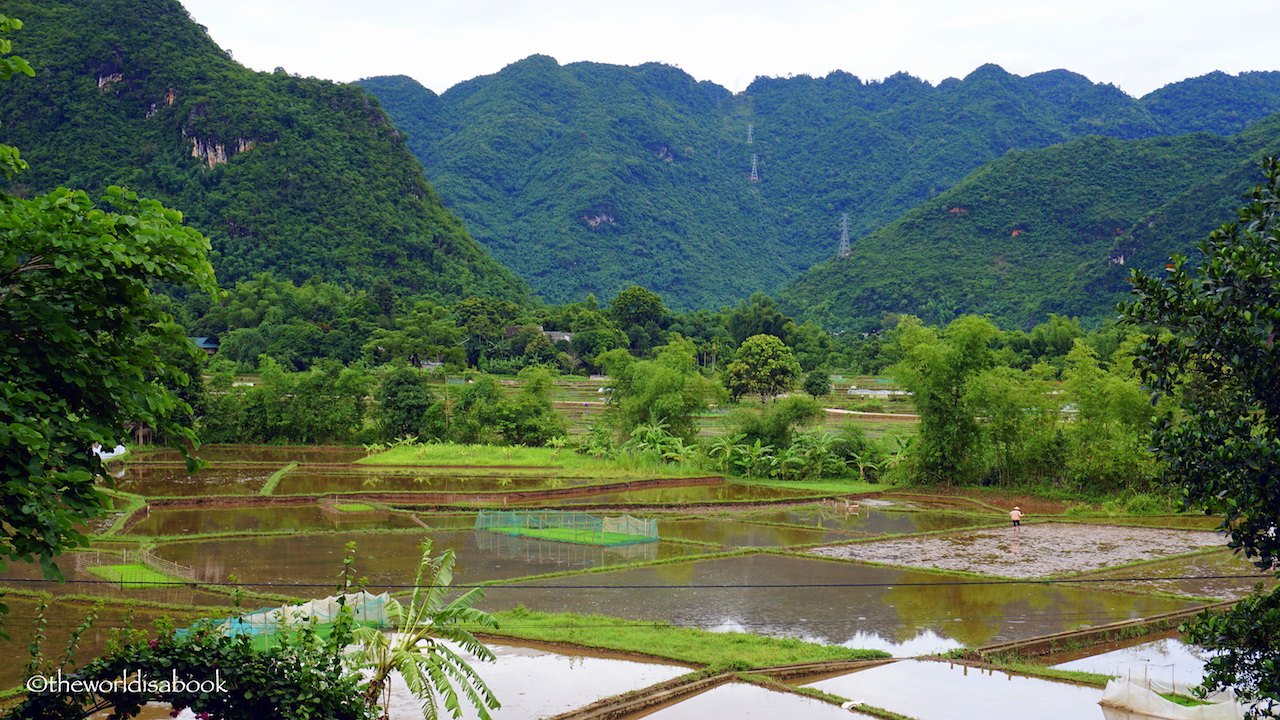
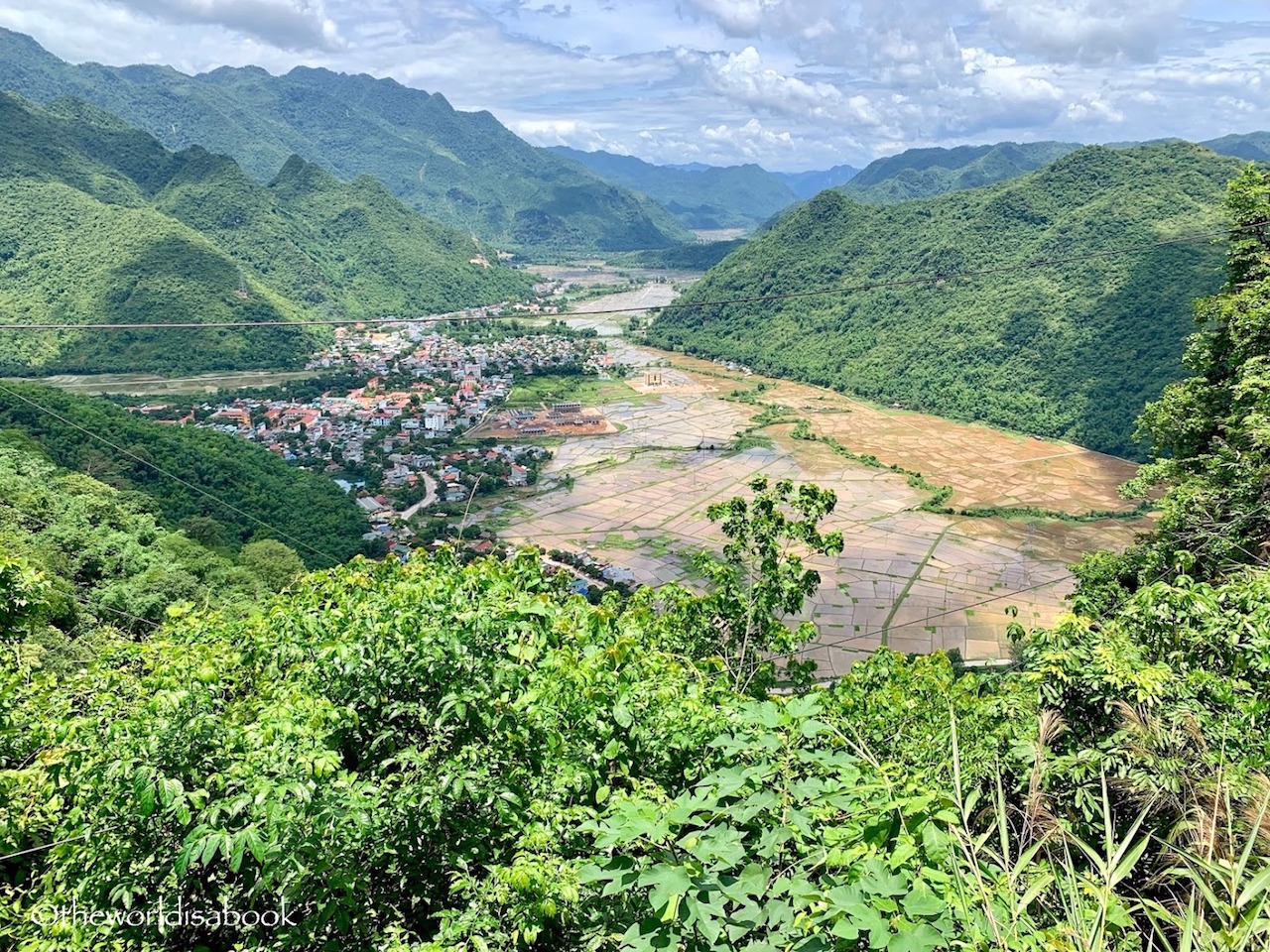
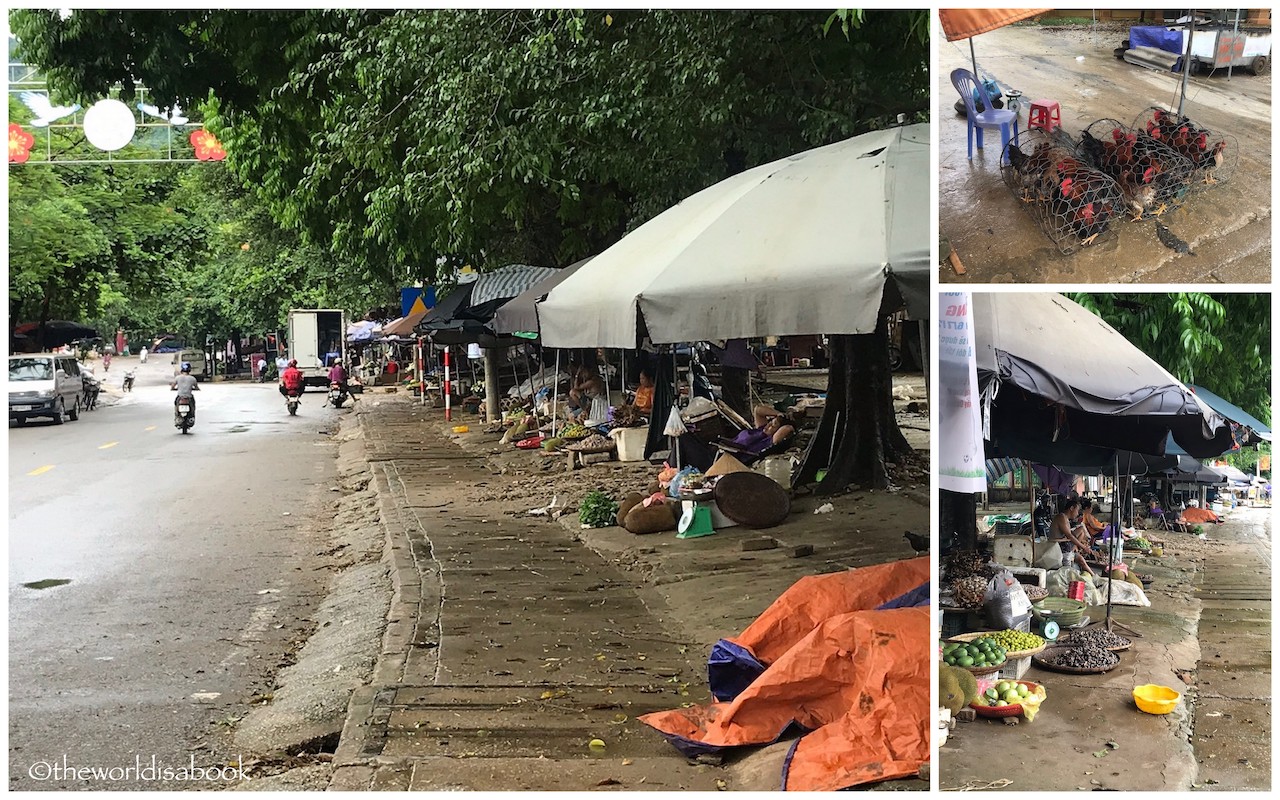
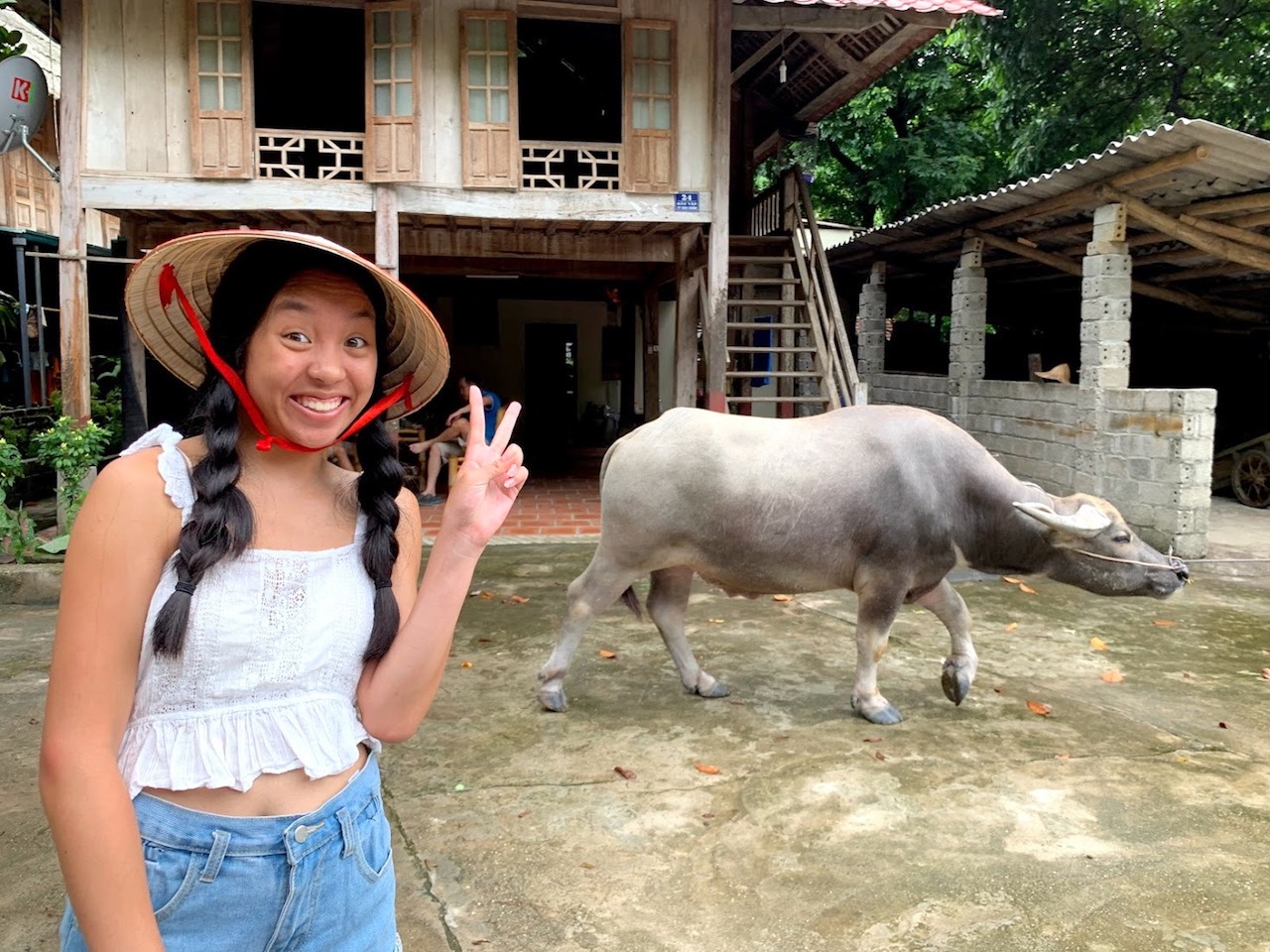
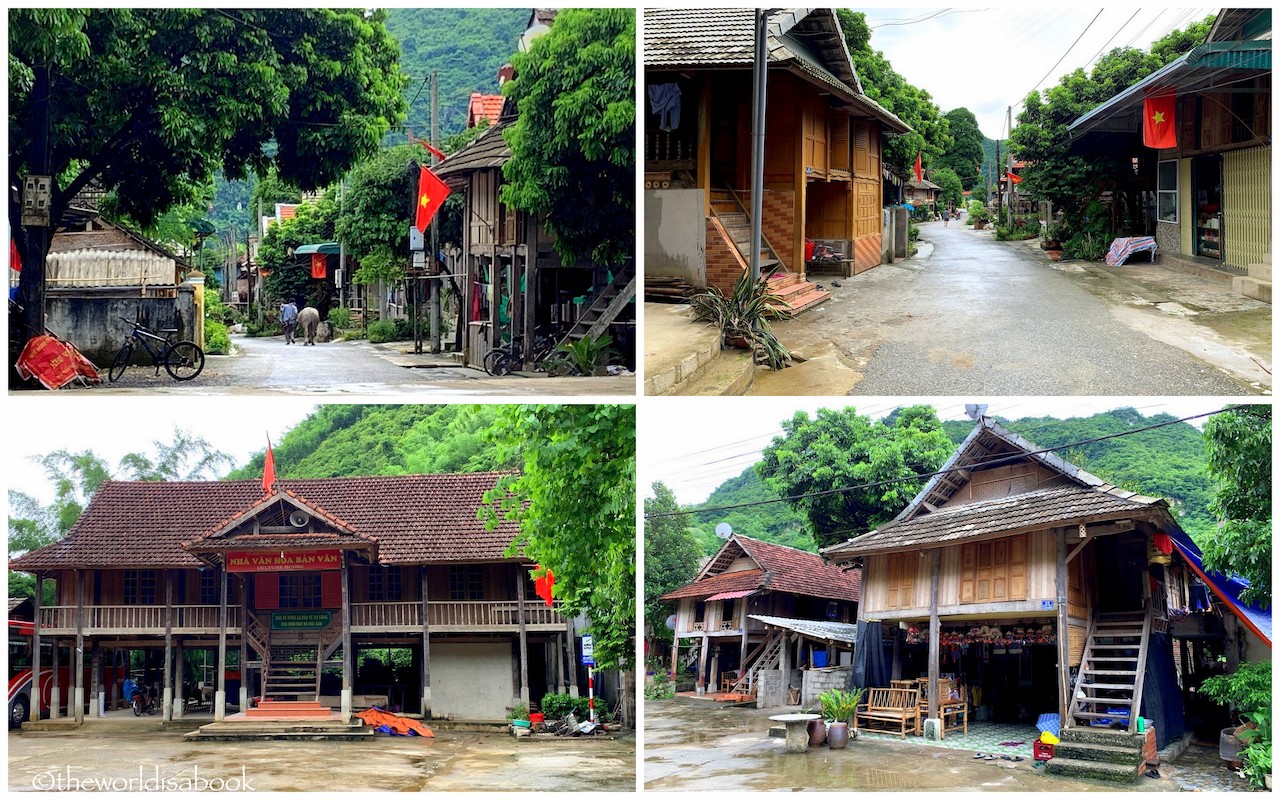
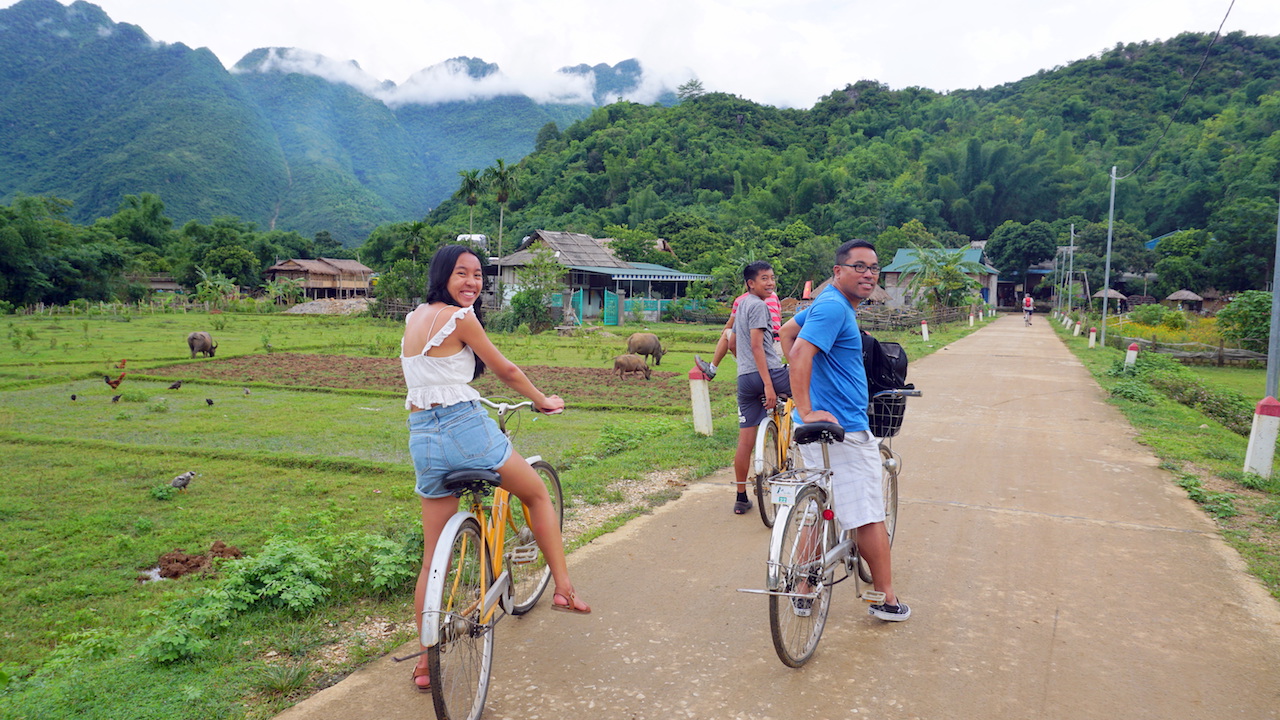
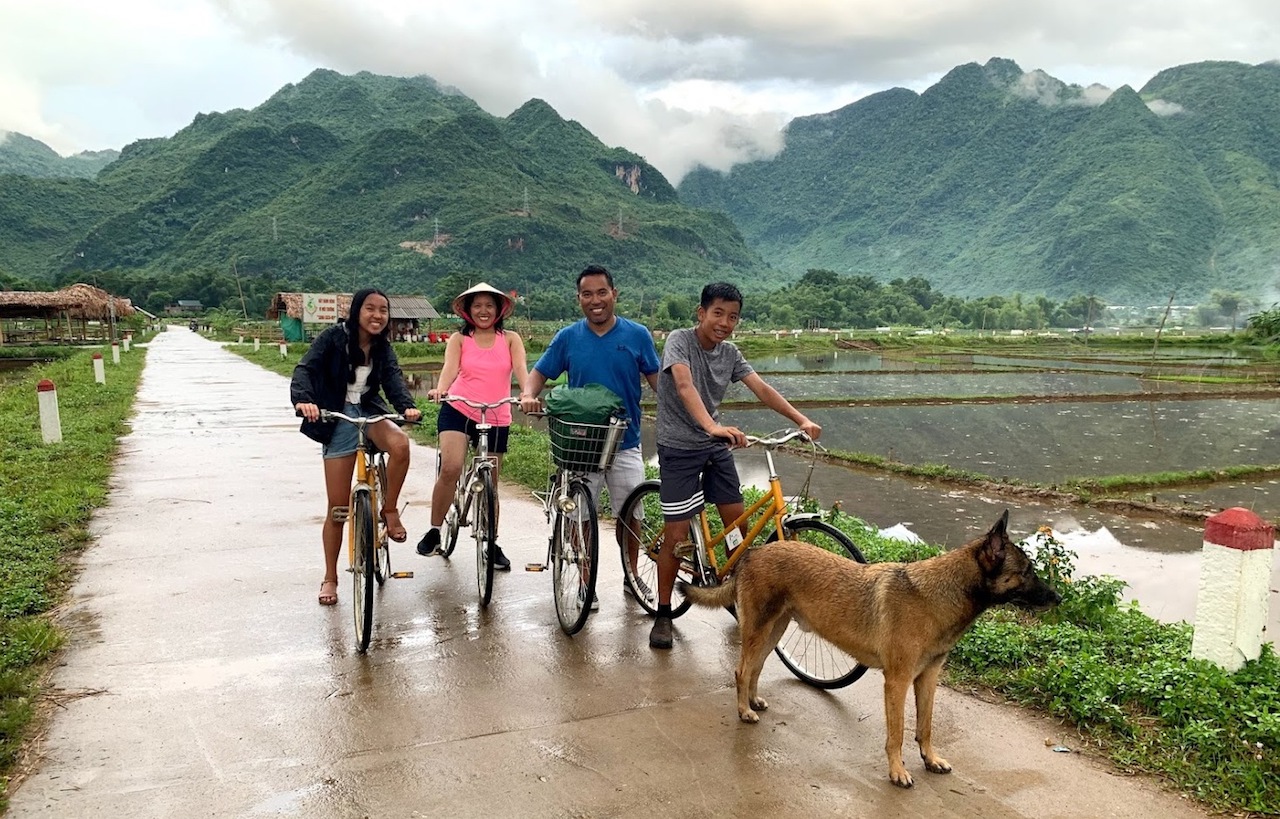
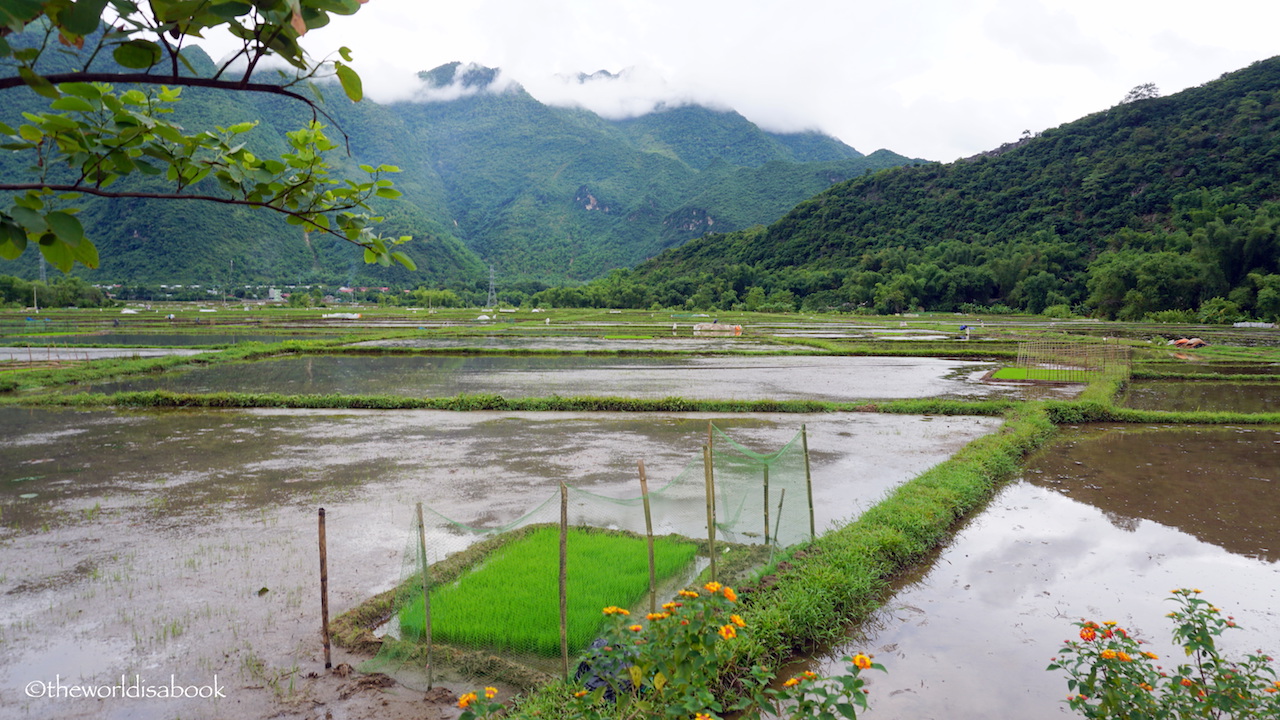
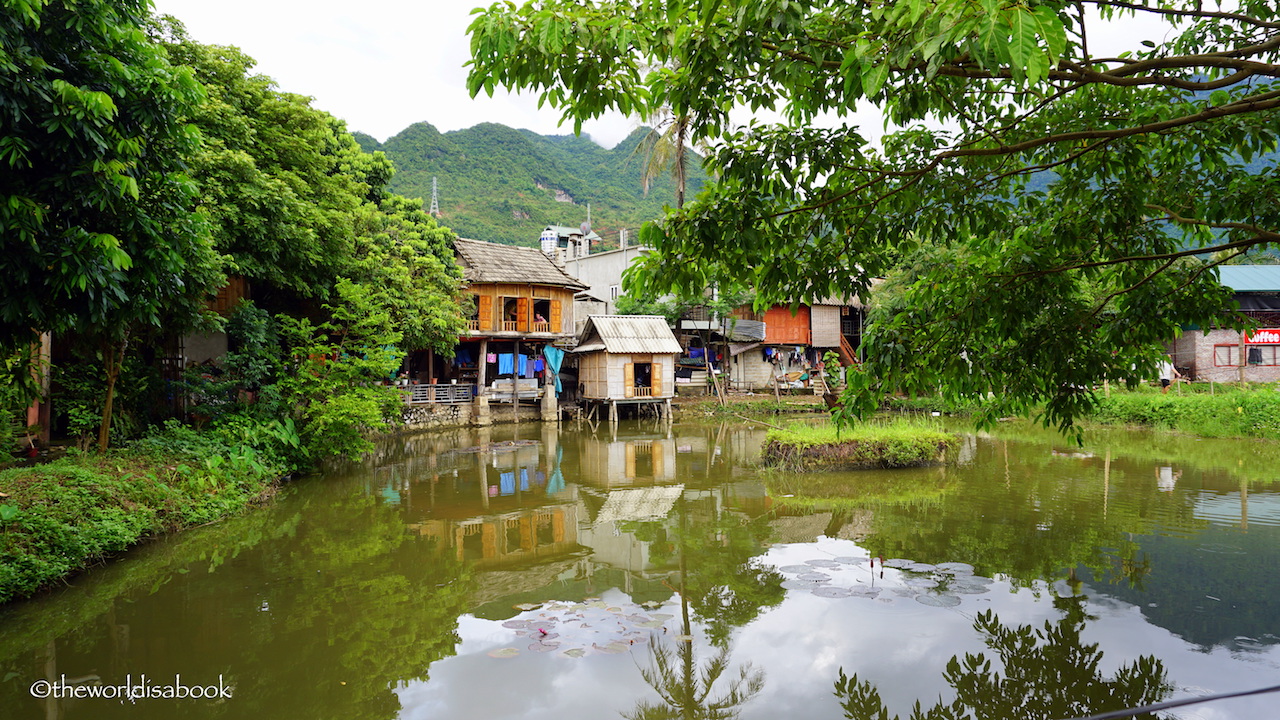
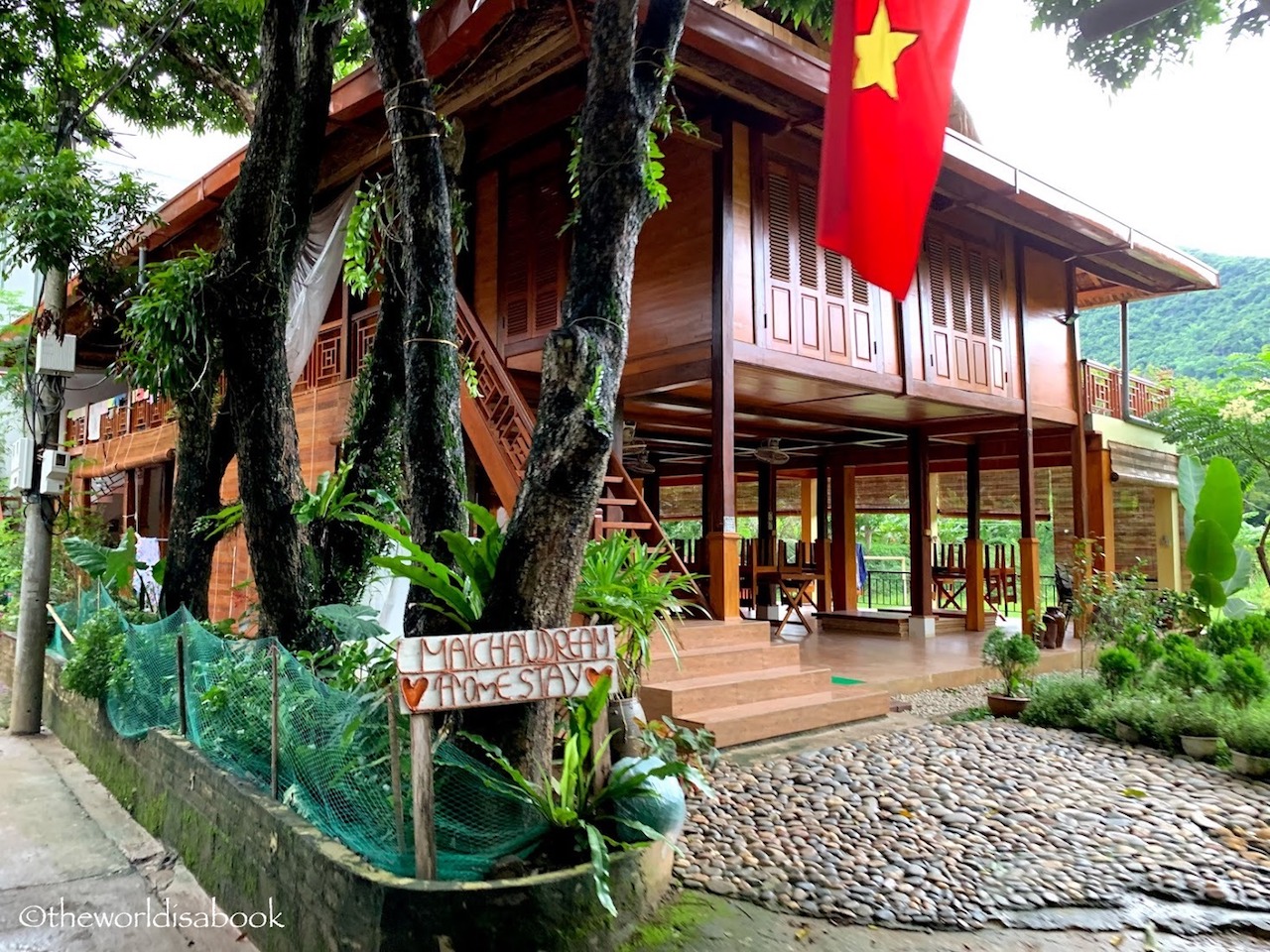
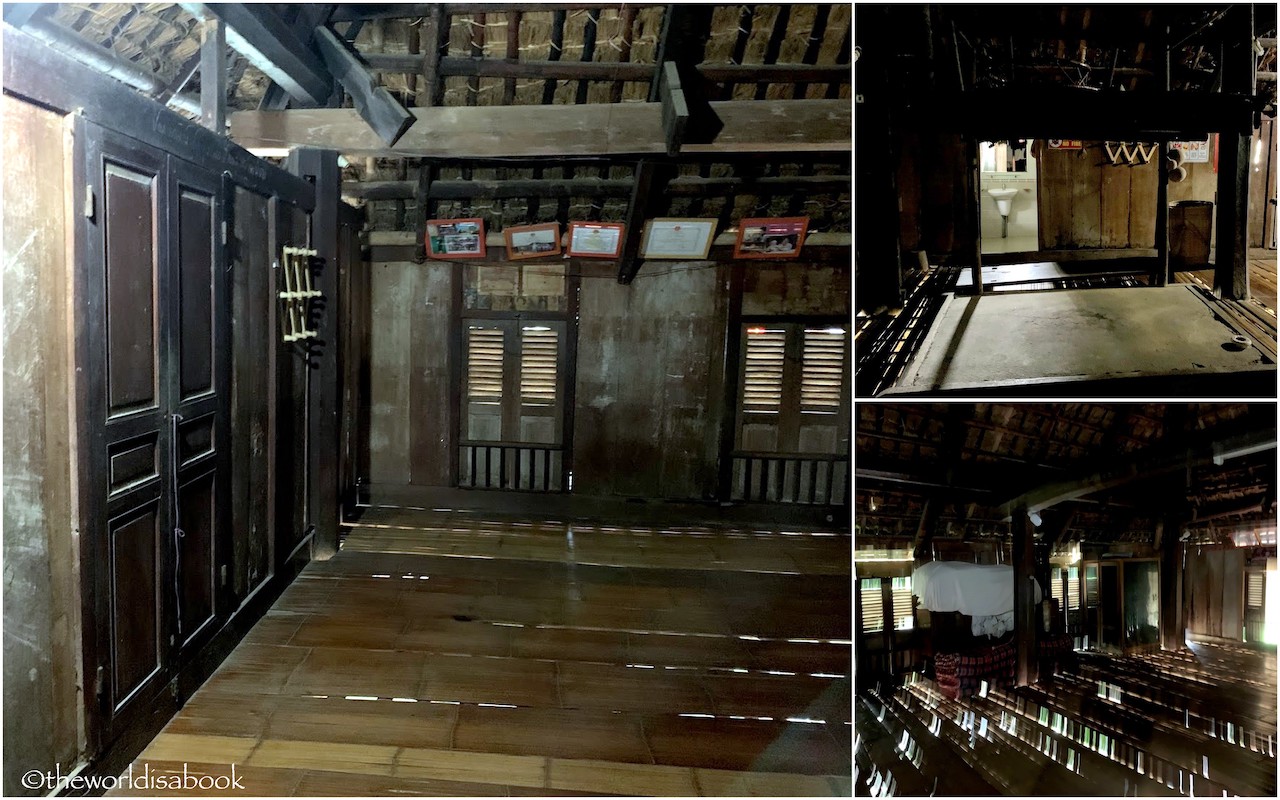
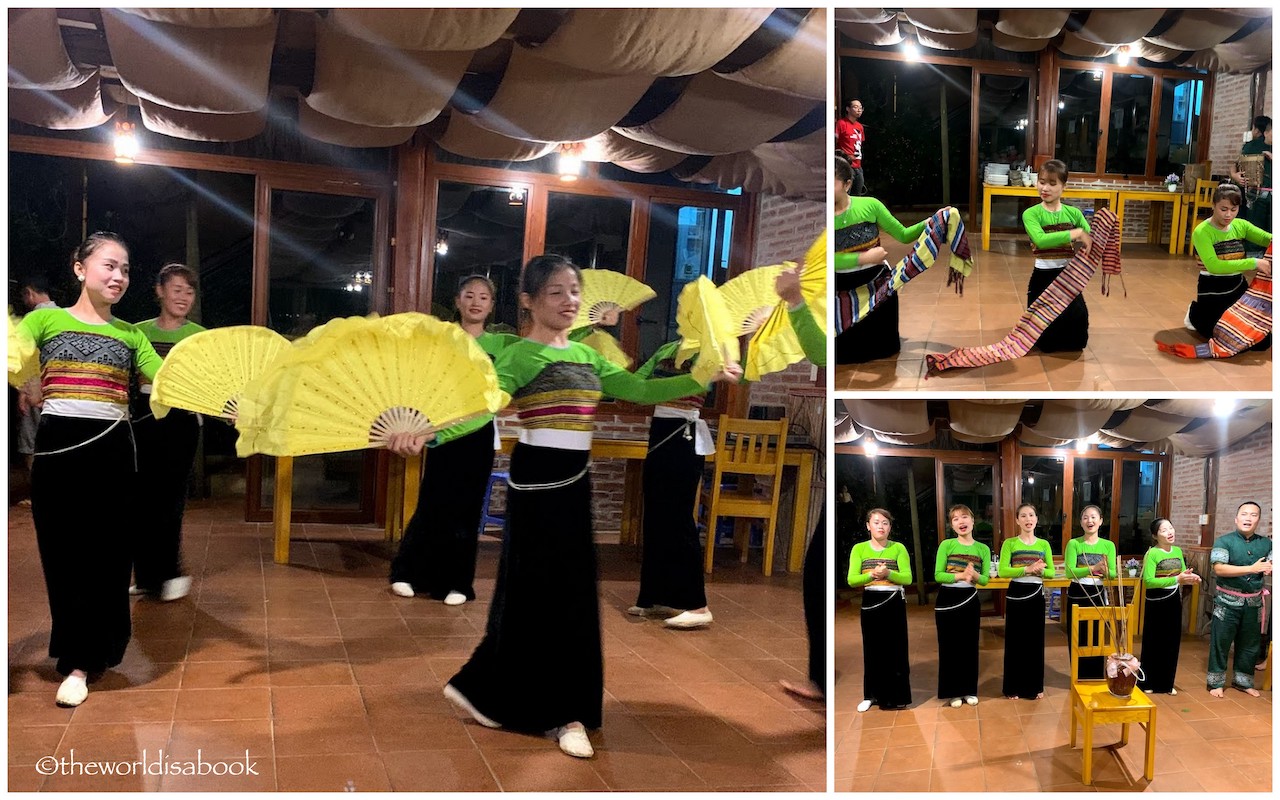
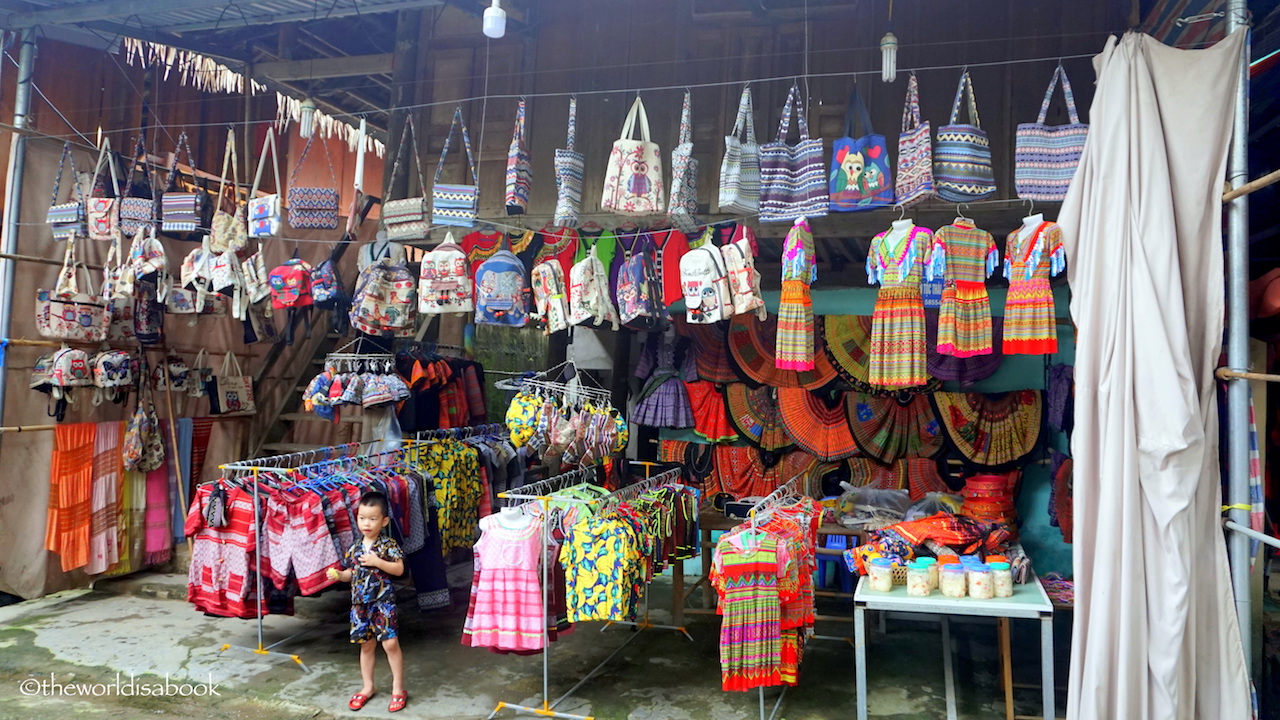
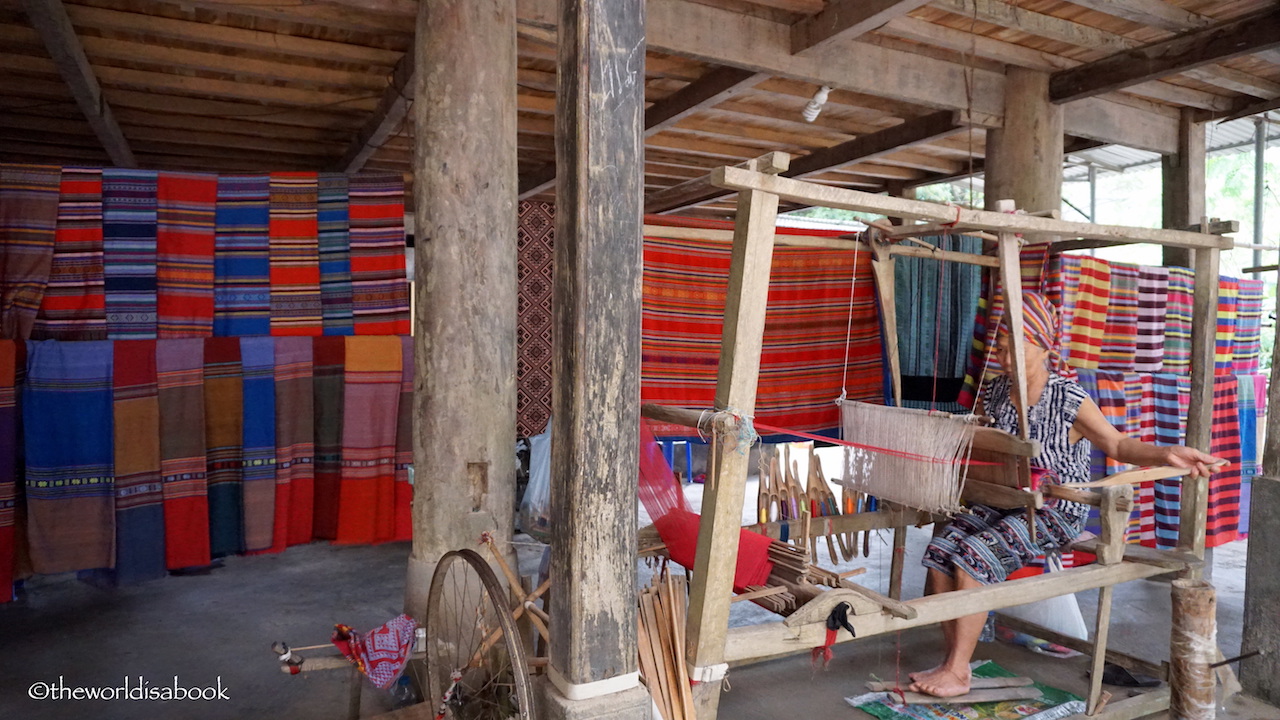
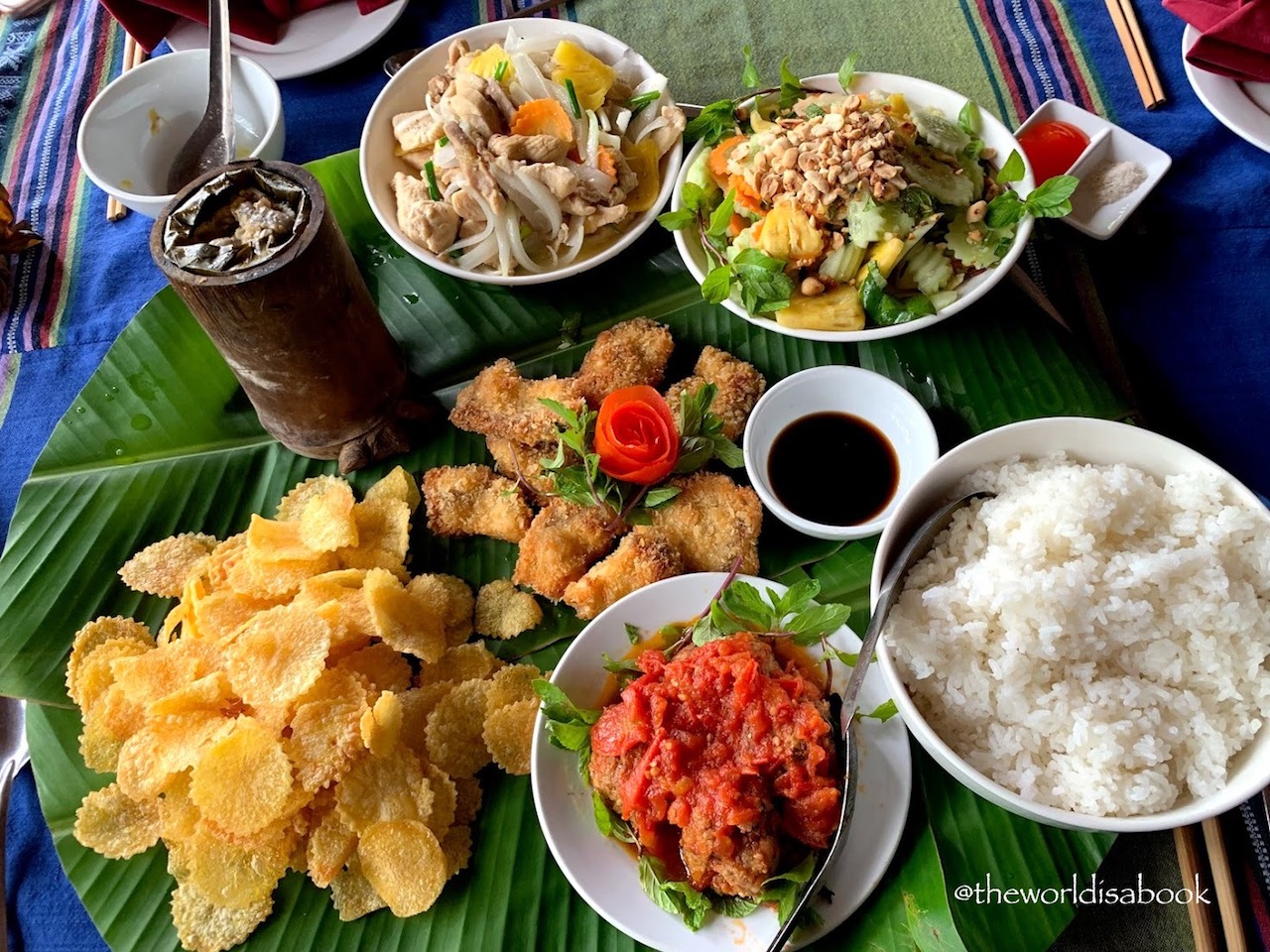
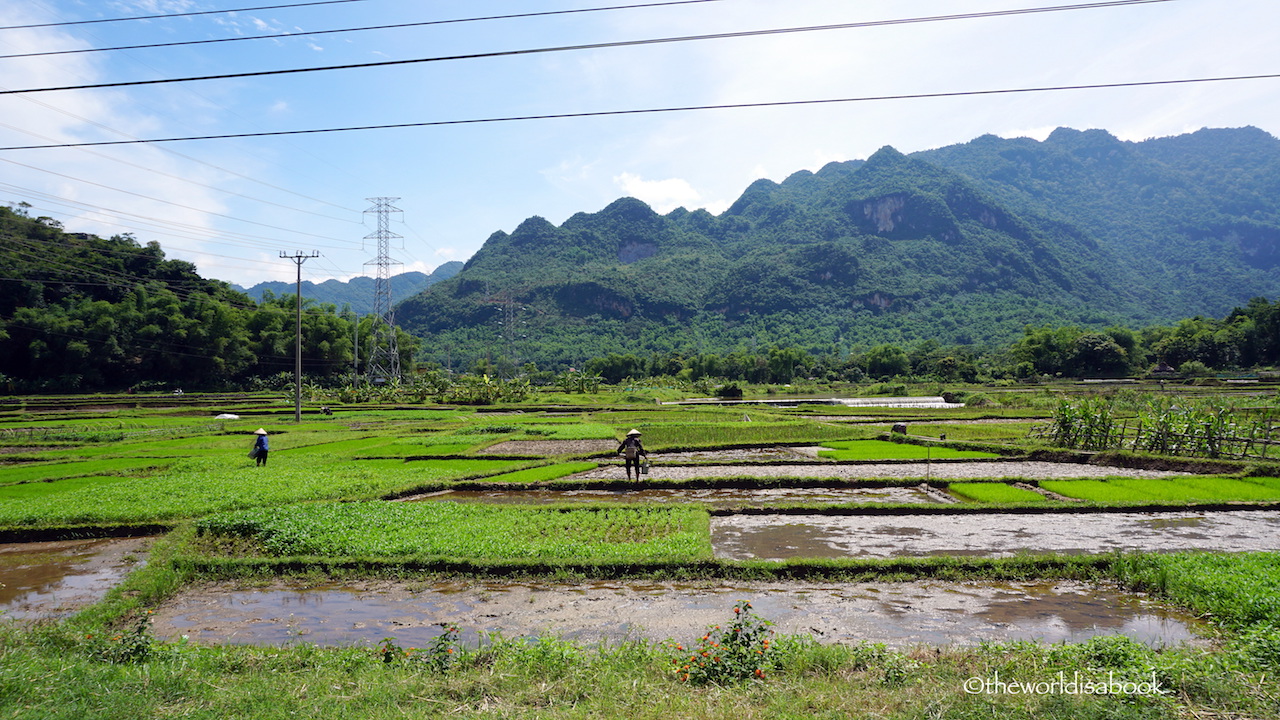
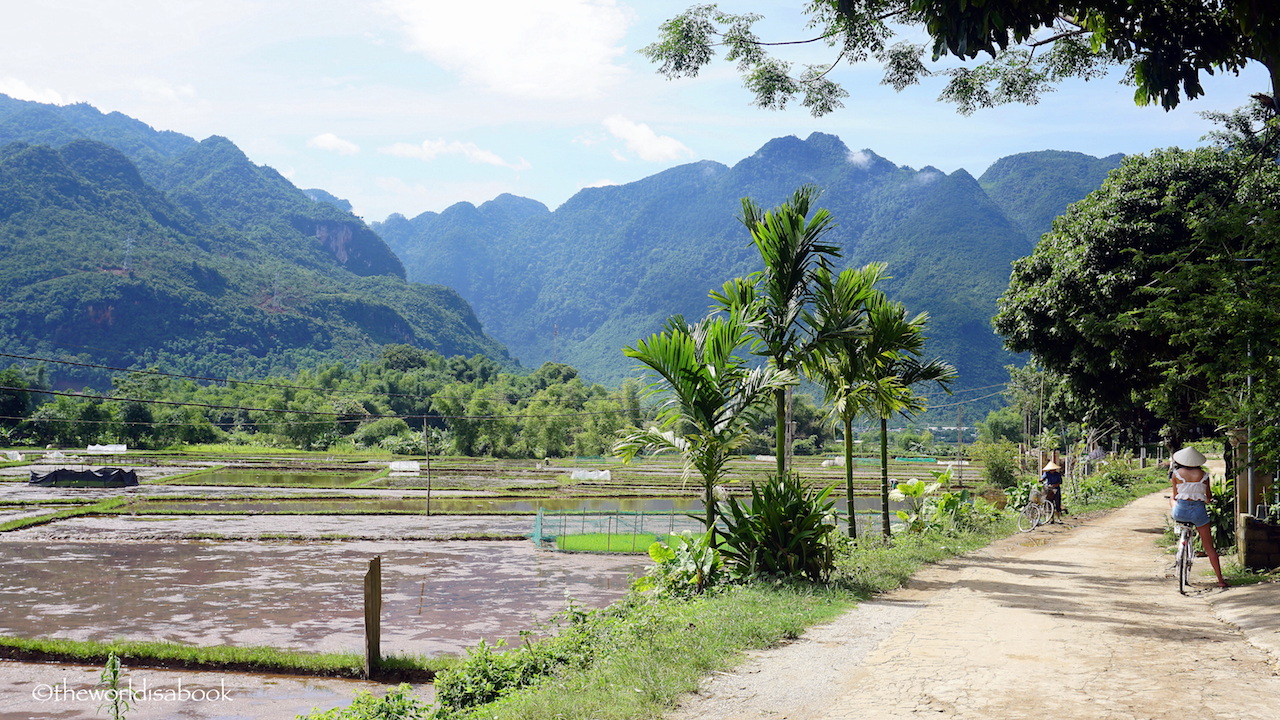
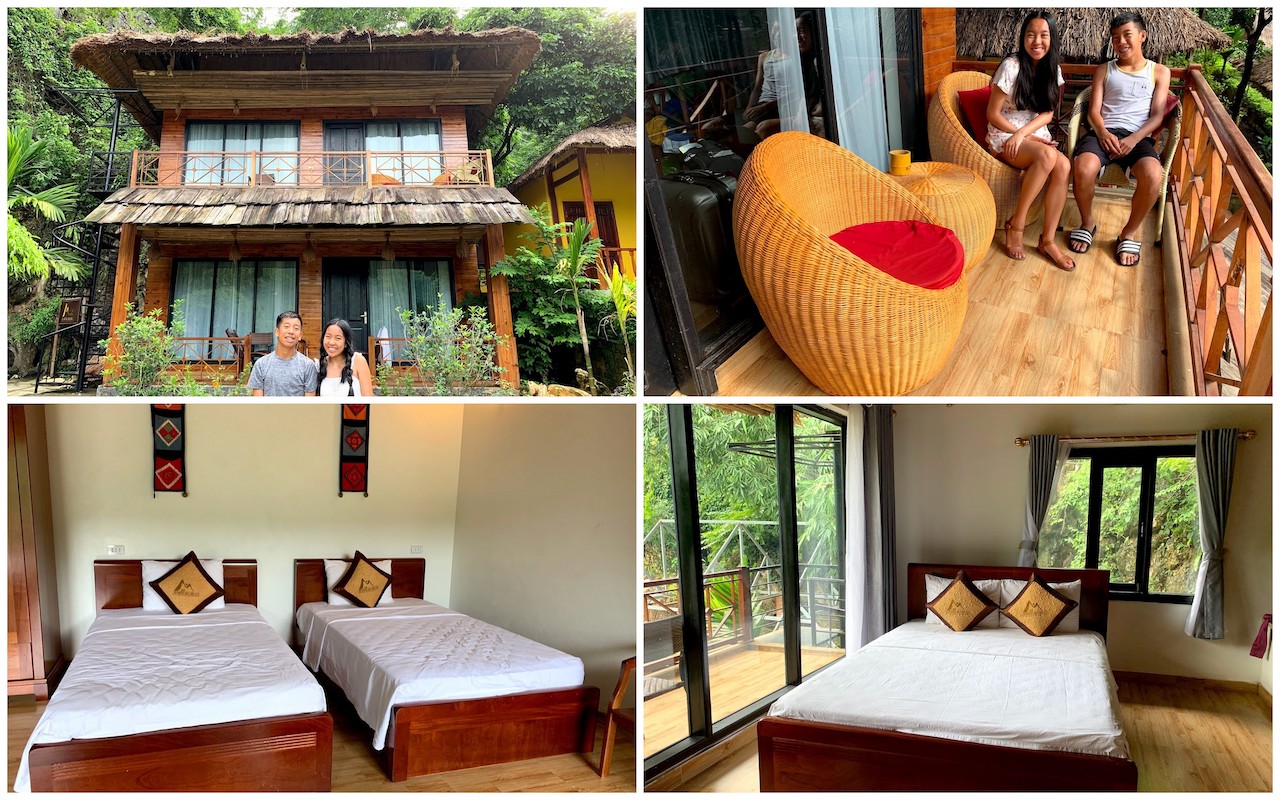
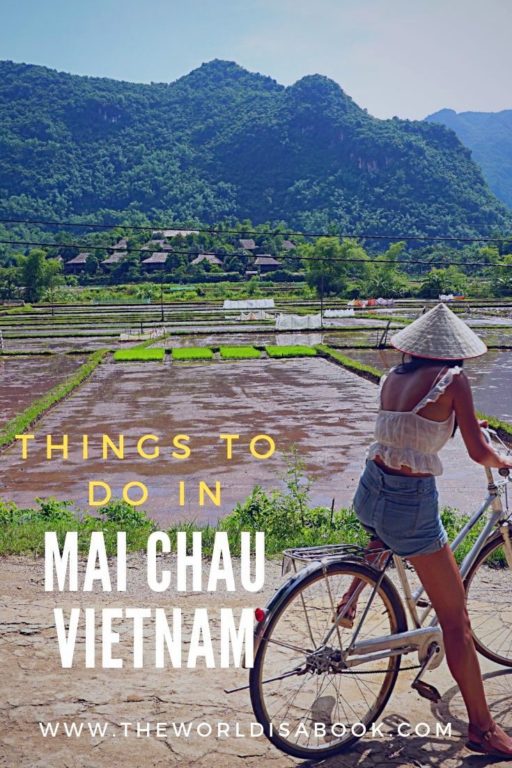
What a beautiful and interesting area! It sounds like your cancelled tour worked out well. I love when it works out like that!
Been a few times in Vietnam and in Halong Bay Area (trip is too overrated anyway! But this is the first time I hear about Mai Chau Valley; looks like a great place to stay and relax for a few days with kids!